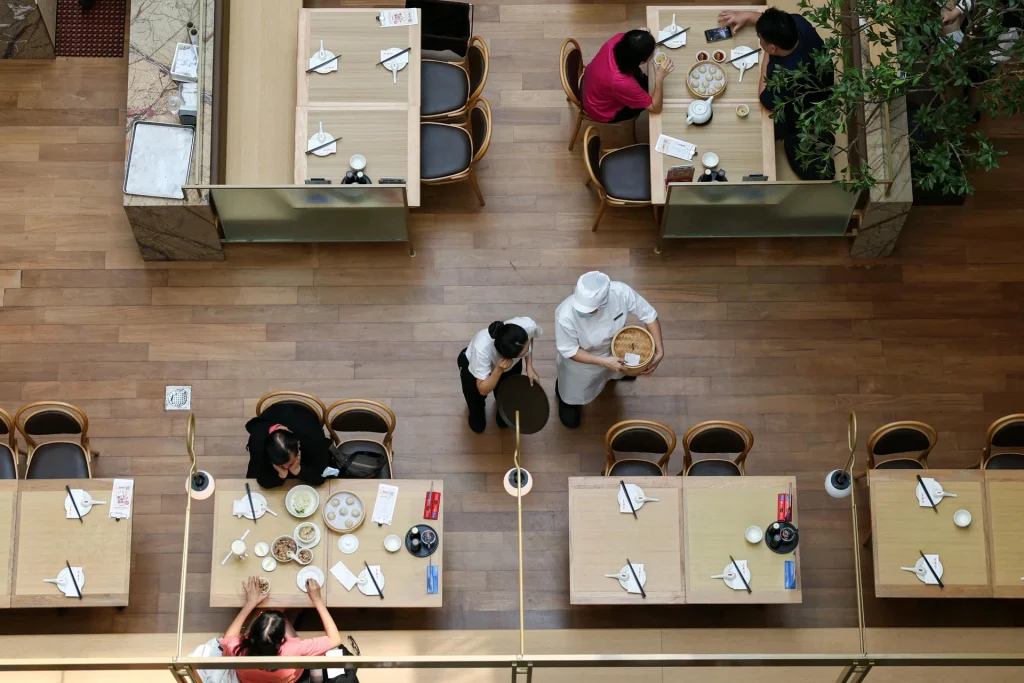[SINGAPORE] As listed food and beverage (F&B) operators cite a drop in demand for restaurant meals amid high rental rates and operating costs, analysts say this is pointing to a worrying trend of mid-market operators struggling to find their niche.
Operators such as Tung Lok Restaurants and Japan Foods Holding (JFH) sank into the red for their FY2025, which ended on Mar 31 for both groups.
Tung Lok’s net loss for the full year was S$1.8 million, compared to its S$2 million net profit the year before. Its revenue tumbled 8.7 per cent to S$82.1 million.
JFH, which operates the Ajisen Ramen and Tokyo Shokudo chains, started running up a loss of S$495,000 in its previous financial year.
For its full year, the restaurant operator booked a net loss of S$7.9 million, on the back of its revenue falling 3.2 per cent to S$83.6 million.
Both Tung Lok and JFH cited the subdued economic outlook and uncertainty from current geopolitical tensions as reasons for their poorer performance.
BT in your inbox

Start and end each day with the latest news stories and analyses delivered straight to your inbox.
Carmen Lee, head of OCBC investment research, said that despite the reprieve from the current tariff war, the overall situation is still unclear.
This may be having an impact on job growth and consumers’ disposable income, she added, so they are likely to be cutting down on discretionary spending amid the slowing global outlook. The changes they make as a result could well include eating out less often.
Euromonitor’s Asia-Pacific insight manager for food, Emil Fazira Kamari, suggested that brands positioned in the middle, price-wise, may find it tough going in these challenging times: “They lack a competitive edge because consumers tend to trade down or make the most out of their spend.”
Rising costs, falling outlet numbers
Costs are also contributing to the tough industry environment, eating into operating profits.
Jumbo Group, another restaurant operator, is still in the black, but its profits have shrunk because of rising operating expenses. Its profits slipped 10.6 per cent to S$7.9 million for the six months ended Mar 31, which marked the end of the first half of its FY2025.
The group’s cost of sales went up 2.8 per cent, mainly from the higher prices of its raw materials and consumables, and supply chain volatility.
JFH’s selling and distribution expenses grew by 5.5 per cent year on year to S$70.9 million for FY2025, from higher costs of manpower, utilities and rental.
Its other operating expenses were up 82.9 per cent year on year to S$2.3 million – mainly because of renovation costs from the closure of a few outlets.
Shekhar Jaiswal, head of equity research at RHB, said: “JFH’s management has acknowledged that its turnaround will require rationalising the capacity that it aggressively added in previous fiscal years, as well as increasing the revenue from each store.”
The operator closed down six outlets in the second half of FY2025, its hand forced by softening demand and increased competition; 10 more outlets have been earmarked for closure in FY2026.
The research house expects sales growth to slow for JFH in the second half of 2025 due to the anticipated economic headwinds.
“Within this macroeconomic context, executing the swift turnaround that JFH is planning to achieve will be challenging,” said Jaiswal.
JFH is not the only one cutting back on its number of outlets.
Katrina Group, which owns chains such as So Pho and Bali Thai, has been shutting down outlets as well.
The group’s first quarter of FY2025 ended Mar 31 brought a net loss of S$1.1 million, from a net profit of S$88,000 in the corresponding year-ago period.
Revenue for the quarter dropped 21.4 per cent to S$11.2 million, from S$14.3 million in Q1 2024.
Where are the customers?
To Euromonitor’s Emil, the outlet closures pointed to one thing – that the operators were not giving people enough reason to eat at their restaurants and to remember their brand.
And with the declining footfall in certain outlets, it makes little sense for an operator to keep them open from a cost-efficiency perspective, she added.
“Consumers are going for value options,” the analyst said, emphasising that this presents the biggest challenge to operators like Katrina Group, JFH and Tung Lok.
And consumers are increasingly becoming brand-agnostic, she said.
Meanwhile, limited-service restaurants are booming, noted Emil. These include fast-food chains and fast-casual concepts like Poke Theory and Stuff’d, which combine fast-food and 100-per-cent takeaway outlets.
“Many consumers see this category as the perfect balance between value and quality,” she said.
She added that Euromonitor is expecting Singaporeans to favour budget options and to spend more at independent hawkers and street stalls than in chain restaurants.
She said the closures of outlets are not the main problem. The “failure to hyper-localise” is. Hyper-localising entails tailoring menu items and operations to suit different locations and peak ordering times.
“And having a delivery channel is a must in today’s landscape,” she noted.
She said that although chain operators have fared better in recent years, Euromonitor believes that growth by independent food services – the independent operators and food stalls – will surpass that of chain operators in 2025.
So, what should investors do now?
In the consumer space, it seems like operators serving up offerings that are perceived as affordable or essential may fare better.
Paul Chew, head of research at Philip Securities, cites snack-food chain Old Chang Kee as an operator that is faring well with its affordable offerings.
It has been relatively easier for the curry-puff maker to raise its prices to make good on escalating costs, he said, because it has a large manufacturing facility to support its expansion and to reap economies of scale.
Old Chang Kee’s FY2025 ended Mar 31 recorded a full-year increase of 18.5 per cent in net profits to S$11.5 million, despite a 1.1 per cent slip to S$5.2 million during its second half.


